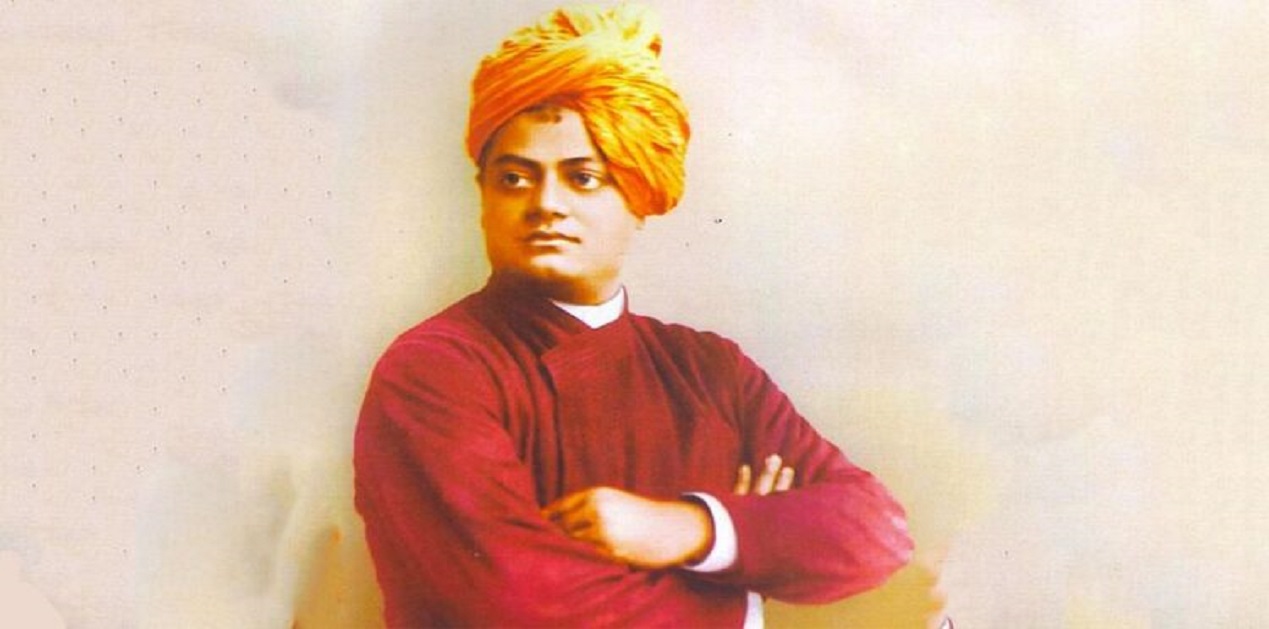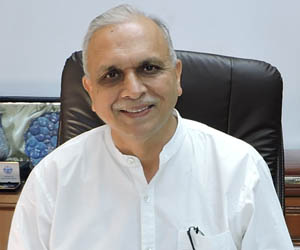On the 162nd birth anniversary of Swami Vivekananda, we remember him as one of the greatest icons for India, especially for the youth. His birth anniversary is celebrated as the National Youth Day. He will always remain an inspiration for the upliftment of humanity. Swamiji’s teaching touched every aspect of life.
In 1896 Joseph Josiah Goodwin, a friend and follower of Vivekananda, compiled his lectures and published them under the title Karma Yoga. Explained in a simple, accessible and direct language, Karma Yoga is a manual for daily living, for work and accomplishment. Swamiji defined karma as any mental or physical activity. “No one can get anything unless he earns it; this is in eternal law”, he said.
Karma
Swami ji also deals with the concept of karma not just as a daily action but as cause and effect. The law of Karma is also the law of causation. The universe runs through the laws of causation. Every act of doing has a cause and an effect. To get freedom, we have to get beyond this universe, says Swami ji. Freedom cannot be found in the universe because the universe is all about bondage.
There are two ways to get the freedom from the bondage. One is that of the ‘neti, neti’ (not his, not this)”. This is the negative way. This is the most difficult path to achieve freedom. Few people can achieve freedom by denying everything, as ‘neti, neti’ implies. The other way is that of ‘iti’ or ‘this’. This is a positive way. You experience the world, its bondage and then gradually give up the fruits. This is the way of a Karma Yogi.
Karma, simply put, is doing action or work. The goal of work should not be to seek pleasure but to seek knowledge, Swami ji said. The karmas shape a person’s character. Karma can have a good or a bad effect. Swamiji said, “If you want to judge the character of a man, look not at his great performance… (but) on his common actions… karma’s effect on his character is the most tremendous power that man has to deal with”. Karma being so important, we must understand the nature of karma and know how to perform it. “Karma should be done to bring out the power of the mind and wake up the soul,” Swamiji said.
Everybody is a slave to karma. Nobody can escape karma and every form of action has a motive behind it. But when a man works without a selfish motive, he achieves the highest work. Swamiji says that even the “lowest forms of work are not to be despised… but everyone should always try to get towards higher and higher motives”.
Undoubtedly, motives of various kinds guide people to act. There cannot be action without motive. But there is also “work for work’s sake”. Swamiji says that if someone could work “even for five minutes without any selfish motive… without thinking of future, of heaven, of punishment, or anything of the kind, (he) has in him the capacity to become a powerful moral giant.” Energy is frittered away in following a selfish motive. Self-control and self-restraint will produce a “mighty will” and the people of character like Christ or Buddha.
Karma Yogi
In the Bhagwad Gita, Lord Krishna reveals to Arjuna the secret of Karma Yoga and describes the characteristics of a Karma Yogi. Krishna tells Arjuna to do karma without remaining attached to the results of action. Action performed guided by the consideration of the consequence is the karma of low level. According to Swamiji, the goal of all religions is to help one to seek freedom from the bondage of the world. Karma Yoga is a system of ethics and religion which leads to that freedom. A Karma Yogi need not believe in God or any religion. His only goal is to realise selflessness. From that alone he will be able to achieve freedom.
Non-attachment
Swamiji explains the teaching of Gita that we have the right to work but not to fruits thereof. “Leave the fruits alone. Why care for results? If you wish to help a man, never think what the man’s attitude should be towards you. If you want to do great or good work, do not trouble to think what the result will be. Swamiji’s advice was that we should work without any selfish motive. In his words, “Karma Yoga is the attaining through unselfish work of that freedom which is the goal of all human nature”. Karma yogi is engaged in realising selflessness.
Duty
In Karma Yoga, Swamiji deals with the concept of duty with great clarity. All of us have to do our duty. What is duty after all? In the ordinary sense, “It is really the impulsion of the flesh, of our attachment; and when an attachment becomes established, we call it duty.” According to Swamiji, “this peculiar sense of duty is very often a great cause of misery…”. We become slaves to duty with no time left to do anything else. Those who want to be Karma Yogis, “must throw this sense of duty overboard…Whatever you have to give to the world, give by all means, but not as a duty”. Our true duty is to be “unattached, and to work as free beings, to give up all work unto God”. We must do our work as if we are working out God’s will. We must ‘Resign everything to God…Seek no praise, no reward for anything you do.” That is the hallmark of a Karma Yogi.
Work makes our character. Each man’s character is determined by the effect of karma he has done. When a man thinks good thoughts, and does good work, he will have a good character. Swamiji advised, “Work like a master and not like a slave”. When you do work as your duty, unattachment follows. If working like a slave is selfishness and un-attachment, working as masters of our own mind gives right to the bliss of non-attachment”. Regard work as worship of the Lord. He said, if we regard work as worship, then we give up all the fruit of the work to the Lord.
Non-resistance cannot mean passivity
Swamiji says a Karma Yogi understands that “… man’s duty is to resist evil; let him work, let him fight, then only, when he has gained the power of resistance, will non-resistance be a virtue”. Inactivity should be avoided and activity means resistance. Swamiji exhorted, “Resist all evil, mental and physical; and when you have resisted, then will calmness come”. So, the excuse of not doing anything in the name of the virtue of non-resistance is not an option for us.
Renunciation cannot be an excuse for not working. Swamiji’s advice was, ‘plunge into the world and then after a time, when you have suffered and enjoyed all that is in it, will renunciation come; then will calmness come. So fulfil your desire and everything else, and after you have fulfilled the desire, there will come the time when you will know that they all were very little things…” Every man should take up his own ideal and endeavour… that is a surer way of progress than taking up other man’s ideal which he cannot hope to accomplish”.
Wealth
Swami Ji was not against material wealth. For Swamiji, a householder was an extremely important pillar of society. He had to work and earn wealth. That was his duty. He said, “Going after wealth … is not bad”. A householder who “does not struggle to get wealth is not moral… If he gets riches, hundreds of others will be thereby be supported… the householder is the centre of life and society”. However, there was a caveat too. A householder must not earn with by wrong means. “He must not gamble, he must not move in the company of wicked, he must not tell lies, and must not be the cause of trouble to others… The householder must speak the truth and speak gently…”. Swamiji advised the householders to do useful activities, “to dig tanks, plant trees, make roads, and build bridges”. If he does that, he will be the “greatest yogi”.
At a time when moral values are not taught and the youth is confused, Swamiji’s Karma Yoga is an action guide. It tells us that karma has to be performed by everyone but it should be done with non-attachment. Misery and suffering of the world have to be experienced. That cannot be avoided. But a nishkam karma will help attain the freedom from bondage which is the ultimate goal of every human being. Swamiji’s Karma Yoga needs to be taught and practised in schools, colleges and at home for a better future for India.
(The paper is the author’s individual scholastic articulation. The author certifies that the article/paper is original in content, unpublished and it has not been submitted for publication/web upload elsewhere, and that the facts and figures quoted are duly referenced, as needed, and are believed to be correct). (The paper does not necessarily represent the organisational stance... More >>
Image Source: https://thesecondangle.com/wp-content/uploads/2022/01/vivekanand.jpg










Post new comment